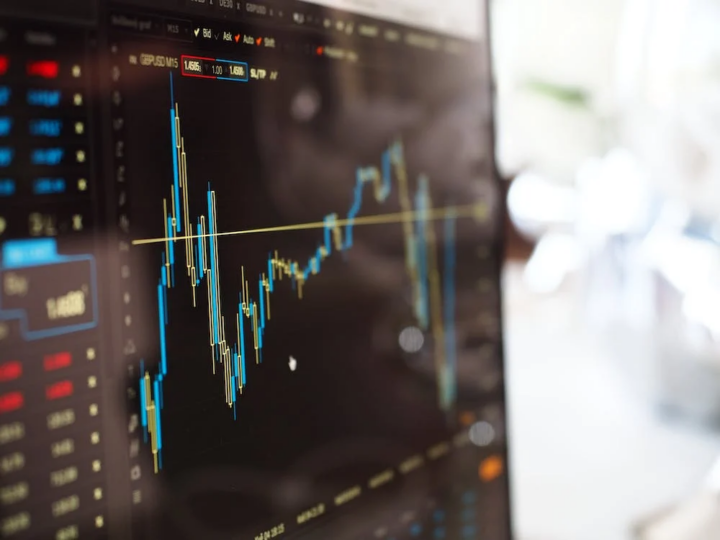
Unlock the power of cutting-edge technology in forex trading as we delve into the intricate world of forex algorithms. With the rise of AI and Forex algorithms, trading has never been easier. Trading nowadays is the biggest it’s ever been. Professional websites that exchange currencies entice potential users by offering a welcome bonus forex $30.
In this comprehensive guide, we’ll take you on a journey to decode forex algorithms, shedding light on how they work, their advantages, and how you can harness their potential to enhance your trading strategies.
What Are Forex Algorithms?
Forex algorithms are the heartbeat of modern currency trading, propelling the industry into a realm of precision and efficiency.
These intricate pieces of code execute buy and sell orders based on predefined criteria, making decisions in mere milliseconds, far faster than any human trader could react.
The Basics of Forex Algorithms
At the core of forex algorithms lies a series of mathematical and statistical calculations.
These algorithms process vast amounts of data, including historical price movements, economic indicators, and news and social media sentiment analysis.
They use this data to identify potential trading opportunities and execute orders. Understanding the fundamental concepts behind these calculations is the first step in deciphering the inner workings of forex algorithms.
Types of Forex Algorithms
Forex algorithms come in various forms, each designed to cater to different trading strategies and risk appetites.
Some focus on high-frequency trading, executing many trades within seconds, while others adopt a more conservative approach, looking for long-term trends.
It’s essential to explore the diverse array of algorithm types to select the one that aligns with your trading goals and risk tolerance.
Common algorithm types include trend-following, mean-reversion, and arbitrage algorithms.
Customizing and Fine-Tuning Algorithms
The next step is customization once you grasp the fundamental principles and are familiar with the various algorithm types.
Tailoring algorithms to your unique trading style and preferences is where the true power lies.
This involves adjusting parameters, setting risk management protocols, and optimizing the algorithm’s performance to suit your goals.
Understanding these intricacies is pivotal for any tech-savvy trader aiming to leverage forex algorithms effectively.
Benefits of Incorporating Algorithms
Algorithmic trading has become a game-changer in forex trading, offering many advantages to tech-savvy traders.
Speed and Efficiency
One of the foremost advantages of algorithmic trading is speed. Forex markets operate 24/5, with prices fluctuating in real-time.
Algorithms can analyze vast amounts of data and execute trades within milliseconds, something human traders can hardly match.
This speed ensures you don’t miss out on profitable opportunities or fall victim to sudden market volatility.
Moreover, algorithms work tirelessly without fatigue, allowing you to trade around the clock.
Emotion-Free Trading
Human emotions like fear and greed can cloud judgment and lead to impulsive decisions in trading, often resulting in losses.
Algorithms, on the other hand, are entirely emotionless.
The emotional detachment minimizes the risk of making irrational decisions during turbulent market conditions, helping you stick to your trading strategy with discipline and consistency.
By eliminating emotions, algorithms contribute significantly to risk management and can improve overall trading performance.
How to Begin Using Forex Algorithms
Integrating forex algorithms into your trading strategy may seem daunting initially, but it becomes an attainable goal with the proper guidance and mindset.
Selecting the Right Algorithm
Choosing the appropriate algorithm for your trading style is paramount.
Begin by assessing your trading goals and risk tolerance.
Are you looking for high-frequency trading with minimal human intervention, or do you prefer algorithms that assist in decision-making while you maintain a more hands-on approach?
Consider your expertise level in programming, as some algorithms may require customization.
Acquiring the Necessary Tools
Once you’ve decided on the algorithm that aligns with your trading objectives, you’ll need the appropriate tools to implement it.
This typically involves selecting a reliable trading platform or software for algorithmic trading.
Many platforms offer a range of pre-built algorithms, while others allow you to design and implement your algorithms using programming languages like Python or R.
Testing and Fine-Tuning
Before going live with your chosen algorithm, it’s crucial to backtest it thoroughly.
This involves running the algorithm on historical market data to evaluate its performance under different market conditions.
Consider parameters like risk management, profit targets, and stop-loss settings.
Based on your backtesting results, fine-tune the algorithm to optimize its performance and align it with your risk-reward preferences.
Conclusion
The fusion of technology and algorithms has unveiled unprecedented opportunities in forex trading.
These digital tools empower traders with unmatched speed, precision, and discipline, ensuring they remain at the forefront of the market’s fluctuations.
By embracing forex algorithms and navigating their intricacies, tech-savvy traders can unlock the potential for enhanced strategies and better risk management.
As technology continues to evolve, staying adaptable and informed becomes paramount in maximizing the advantages offered by algorithmic trading.
It’s a journey that promises to reshape the landscape of forex trading, allowing traders to harness the full potential of cutting-edge innovation.

















